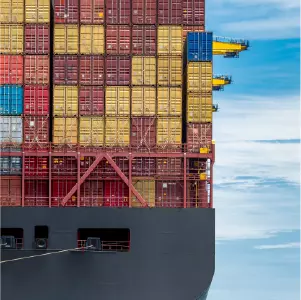
Tariff uncertainty? How CLM and force majeure can shield you

Global trade isn’t exactly known for stability these days. With tariffs and trade restrictions shifting at a moment’s notice, organizations are left scrambling to understand how these changes impact their contracts. One common place they look for protection? The force majeure clause. But when it comes to tariffs, does that clause actually offer any cover? And how can you prepare before the storm hits?
When do tariffs trigger force majeure?
Force majeure clauses are designed to excuse contractual obligations when events outside your control make performance impossible or impractical. But whether tariffs count depends on how the clause is written and how courts interpret it. Here are the key factors that usually come into play:
- Specific Language: If your contract spells out “tariffs” or “government-imposed trade barriers” as force majeure events, you’re in a much stronger position.
- Catch-All Clauses: Some contracts include broader language like “events beyond reasonable control” that may still cover tariffs, depending on how disruptive they are.
- Nature of the Tariff: Courts will look at whether the tariff was sudden, unexpected, and had a real impact on your ability to perform.
- Intent of the Parties: What was the understanding during contract negotiations? Past deals, industry standards, and the surrounding context all matter.
- Financial Hardship: Economic burden alone usually isn’t enough, but if a tariff makes performance commercially impossible, it could tip the scales.
The real challenge: knowing where you're exposed
Even with good legal language, you can’t claim force majeure unless you actually know which contracts are affected, what your obligations are, and how to act. That’s where things often fall apart. Common challenges include:
- Figuring out which contracts mention tariffs
- Staying current on trade policies across different regions
- Gauging when a tariff crosses the line into “impossible” territory
- Managing notice requirements to counterparties
- Gathering proof of mitigation and compliance efforts
How Conga CLM helps you get ahead of the risk
Conga CLM isn’t just about managing contracts; it’s about managing what those contracts mean when the world changes. Here’s how it helps you stay prepared:
Smarter contract intelligence
With AI-powered analysis, you can instantly:
- Identify all contracts with force majeure clauses
- Pinpoint where tariff-related language appears
- Compare levels of protection across agreements
- Understand jurisdiction-specific force majeure standards
Real-time risk monitoring
Conga CLM keeps you ahead of the curve with:
- Automated alerts when trade policies shift
- Tracking tools for force majeure deadlines
- Dashboards showing exposure by region, vendor, or product
- Evidence logs that help you prove diligence if things go to court
Built-in compliance support
When the pressure’s on, documentation matters. Conga helps you:
- Centralize all communications about tariff impacts
- Track mitigation efforts and financial thresholds
- Maintain detailed audit trails showing your response
Tools for strategic renegotiation
If force majeure won’t fly, renegotiation might. Conga CLM gives you:
- A clear view of which contracts are worth revisiting
- Pre-built amendment workflows with approvals and tracking
- Smarter templates that better anticipate future trade shifts
- Visibility into revised obligations moving forward
Making your force majeure strategy court-ready
If a dispute arises, courts want to see that you made a good-faith effort to:
- Perform the contract until it became impossible
- Mitigate the impact of the disruption
- Notify your counterparty properly
- Follow all required procedures
Conga CLM helps you create a paper trail that checks every box.
From Reactive to Ready
Tariffs aren’t going away, and trade policy isn’t getting any simpler. The difference between scrambling and staying steady often comes down to the strength of your contract management strategy.
By using Conga CLM to anticipate risk, monitor exposure, and document your response, you move from playing defense to leading with confidence. And in today’s volatile market, that’s not just protection it’s a competitive edge.



